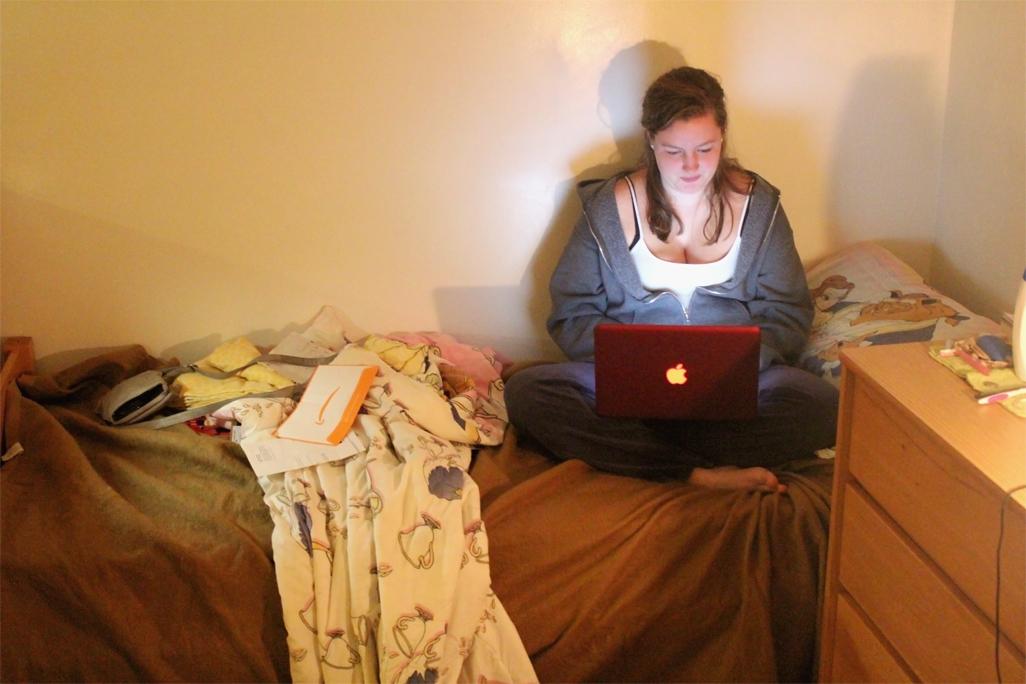
The effects of the flood of Wednesday, Sept. 7 and Thursday, Sept. 8 — which displaced thousands of local residents from their homes, caused millions of dollars in damages and left parts of Binghamton and nearby towns and cities under feet of water — were felt most by the Binghamton University students whose apartments or houses were destroyed, damaged or otherwise yielded uninhabitable, and who remain living in unplanned-for housing, such as friends’ homes or temporary emergency housing on campus.
A seminar was held at 8 p.m. on Wednesday, Sept. 14 in Old University Union room 252 for students whose housing situations were affected by the recent flood. The seminar was held to inform those students about their housing options.
David Husch, director of Off Campus College, gave a presentation at the meeting intended to educate these students of their rights as tenants in New York State.
Husch emphasized that in circumstances such as this flood, when a rented residence is rendered uninhabitable by conditions that are not the tenants’ fault, tenants have legal rights that must be respected by landlords and by the city.
“You can get out of your lease if it’s not habitable,” Husch said. “Some folks have said their places are condemned. Some folks didn’t get flooded, but their apartment complex shut off electricity. They can move back in, but for the past week it’s not been habitable.”
Many BU students who were evacuated from Binghamton and surrounding areas are being temporarily housed in Dickinson Community’s Johnson Hall.
It remains unclear which of them will be able to return to their homes or when they might be able to do so. A total of 312 sites, consisting of houses and apartments, are classified as having suffered “major damage,” 815 sites as having suffered “moderate damage” and an additional 585 homes as having suffered “minor damage.”
Ladonna Romans, a senior majoring in economics, was one of the students that attended Husch’s presentation. She was evacuated from her house on Conklin Avenue on Thursday, Sept. 8, and she has not yet been able to return to it and has been residing with a friend since then.
“I came [to the presentation] because my landlord has been unorganized,” Romans said. “[There’s been] no communication whatsoever in terms of how things are going or a definite date when we can move back in. I came to find out what options I have.”
Romans said that on Monday, Sept. 12 her landlord gave her an estimate of 10 to 12 days for how long it would be before she could move back in, though it remains to be seen if moving back in will even be possible, based on information provided by her landlord.
Eduardo Segura, a senior majoring in political science, said that being forced out of his home by the flooding was affecting his school year.
“Today marks the sixth day,” Segura said Wednesday, Sept. 14, referring to how long it had been since he evacuated his house on Grand Avenue in Johnson City. “It’s disrupted the rhythm of the school year. Especially as a senior I should be focusing on a lot of different things that I don’t have the time to do because I’m worrying about where I can sleep and eat.”
Segura has been staying at friends’ residences since Sept. 8. He said it remains doubtful, given the severity of damages, whether he and his housemates will be able to return.
Husch recommended to students whose residences were damaged in the flood that they take pictures of the damage. He said the pictures could be useful, should students later end up in a small claims court dispute with their landlord over the facts, damages or costs.
Romans is currently living with friends, and Segura has moved into a new house behind the Oakdale Mall.
More information for student tenants is available on the OCC website, www.binghamton.edu/occ/.
— Eric Gustafsson contributed to this report.


